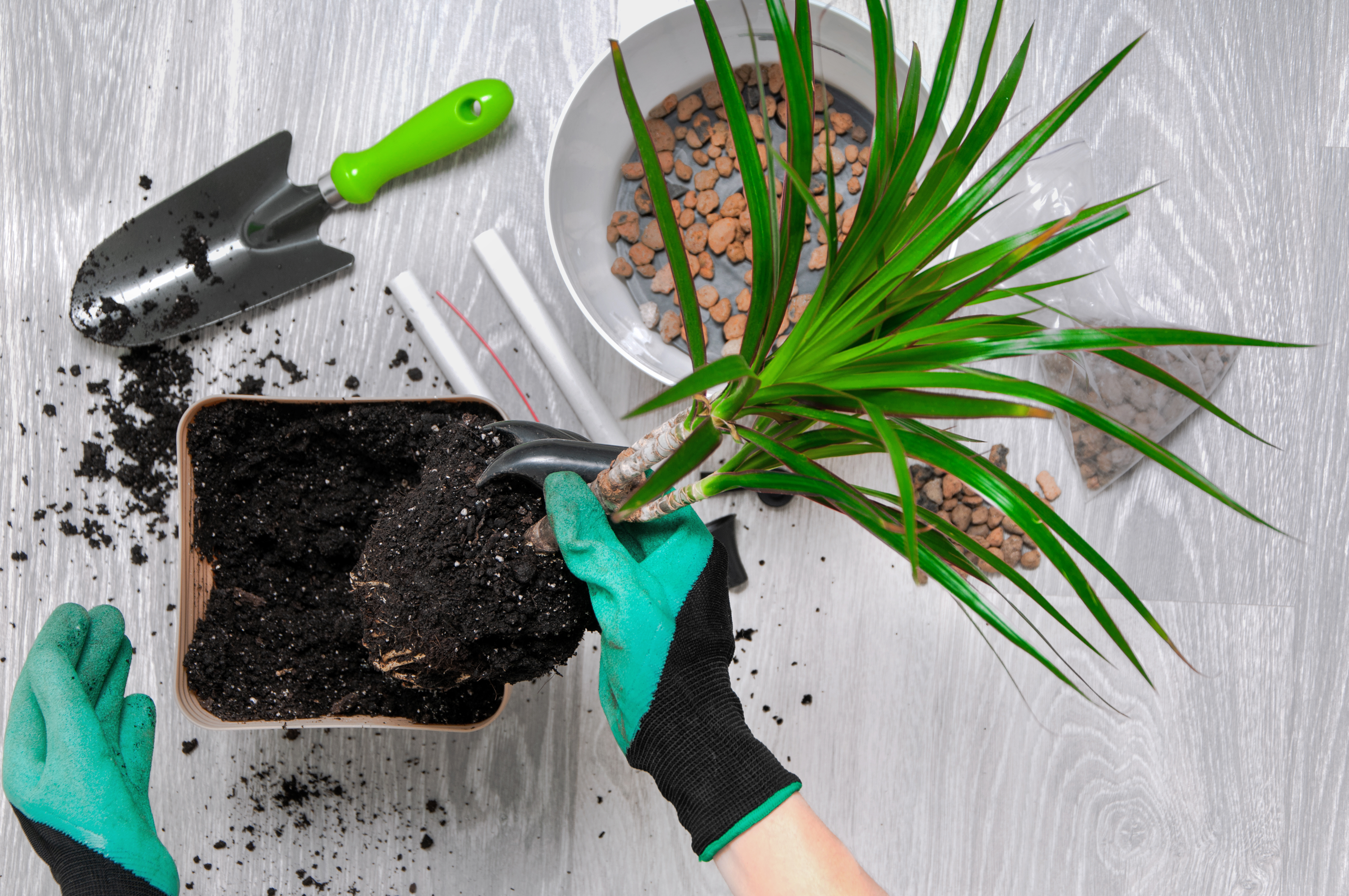When to Repot Plants and 5 Tips for Success
Posted by Jason Wyrwicz on Oct 20th 2021

Plants are living creatures that need to be cared for when in pots and planters. There’s a delicate balance of soil, water, sun, and temperature that must be maintained for a plant to thrive in a pot. If you buy a plant at a store, it will almost always need to be repotted. A few species of house plants will stay small, like succulents and cacti, but most likely, your new plant will get bigger and need a larger pot.
For those plants already around your home, there are some telltale signs that a plant needs to be repotted. We’ll share our tips for repotting success so your plant babies can thrive and continue bringing happiness to everyone nearby.
Why Repot Plants?
If your plant is doing great and is thriving in its pot, you may not need to repot it at this moment. But as a general rule of thumb, plants that grow larger need a repot once a year up to every two years. If you notice a plant is growing too big for the pot that it starts to tip over, then don’t wait a year; go ahead and get that baby a new home! For instance, a monstera grows very big, very quickly, and can be top-heavy, so you have to keep an eye on it more closely.
How Do I Know It’s Time to Repot a Plant?
Take a close look at your plants. Do they look healthy? Are the leaves browning or falling off? Then it may be time to repot your plant. If you notice the soil is drying out faster than normal or the plant roots are popping out of the drainage holes, these are obvious signs of a plant that needs repotting.
Another sign that your pot is ready for a bigger home is when it stops growing altogether, especially in the spring and summer. If new growth isn’t happening, the pot may be restricting the plant’s ability to grow. With that said, it is ideal to repot plants in the springtime when light is stronger, but if that is not possible, be gentle and repot in a warmer environment.
Five Tips For Successfully Repotting Plants
Rehoming a plant is not that challenging, but you must be careful nonetheless. Below are our top five tips for successfully repotting your plants so they have a greater chance of thriving in their new home.
Choose the Right Soil Mix
Your local garden store will be able to help you choose the right soil mixture for the job. For instance, if you have house plants, they will want a different mix of soil, peat, and fertilizers than your vegetable garden or outdoor plants.
Pick the Appropriate Pot
When looking for a new pot for your special plant, make sure it isn’t too much larger than the current one. If you know the plant species will grow quite a lot bigger quickly, then maybe go up a couple of sizes. The right material of pot will help a plant thrive too. All of our pots and planters are designed to give plants the best chance of survival in varying conditions.
Be Gentle and Untaggle Roots
Give your plant a good watering, then plan to repot it the next day. If the plant soil is super dry, you will have a hard time removing it without damage. Gently remove the plant by turning it sideways and tapping on the bottom and sides of the pot. If this is not loosening the plant, you may have to scrape down the sides a bit with a garden trowel. Once the plant is out, if the roots are tangled up, gently massage them break them up a bit. Cut off any roots that look dark or rotten.
Get Ready to Repot
When you are ready to repot, fill your new container with about a third full of fresh soil. You’ll want to place the plant in the middle of the pot and with the base of the stems a half-inch down from the top of the pot lip, so continue adding new soil until the plant will comfortably sit in that spot. Then add soil all around the plant roots until full. Tap the pot on the ground so the soil settles in, and add more as needed to create a solid foundation. But do not pack the soil tightly.
Don’t Over-Water after First Soak
When you repot a plant, you want to thoroughly and continually soak the soil with water until it drains out of the bottom. This will help the plant establish itself in its new home. But after this initial soak, you can go back to the regular watering schedule.
If you would like more information about which pots and planters would be best for repotting your large plants, feel free to contact our expert team on (855) 627-1066 or by email at sales@potsplantersandmore.com.
{ "@context": "http://schema.org", "@type": "BlogPosting", "mainEntityOfPage": "https://potsplantersandmore.com/pots-planters-blog-pots-planters-more/when-to-repot-plants-and-tips-for-success/", "headline": "When To Repot Plants And 5 Tips For Success", "image": { "@type": "ImageObject", "url": "https://potsplantersandmore.com/product_images/uploaded_images/when-to-repot-plants-and-5-tips-for-success.jpg", "width": 4288, "height": 2848 }, "datePublished": "2021-10-20", "dateModified": "2021-11-03", "author": { "@type": "ORGANIZATION", "name": "Pots, Planters & More" }, "publisher": { "@type": "Organization", "name": "Pots, Planters & More", "logo": { "@type": "ImageObject", "url": "https://www.facebook.com/Potsplantersandmore/photos/a.556076991133022/1002789956461721/" } } }



